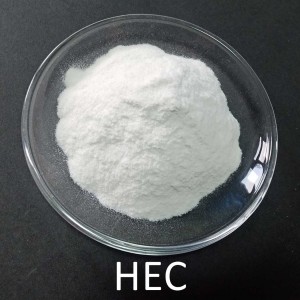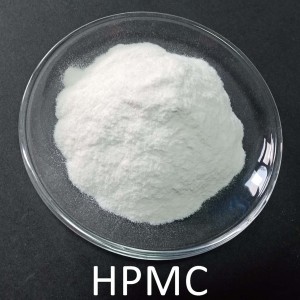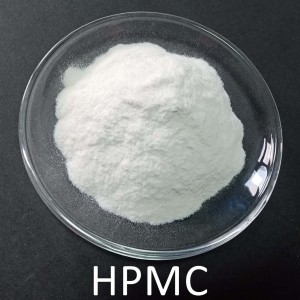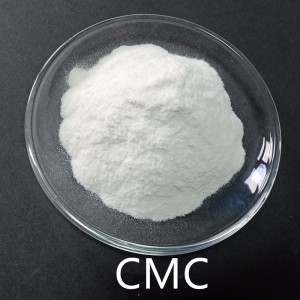Featured Products
-

100% Original Custom Wholesales Water Soluble Additive Cement Based Wall Putty Admixture HEC Powder Hydroxyethyl Cellulose
CAS NO.:9004-62-0
Hydroxyethyl Cellulose (HEC) is nonionic soluble cellulose ethers, both soluble in hot and cold water. Hydroxyethyl Cellulose is a white free-flowing granular powder, treated from the alkali cellulose and ethylene oxide by etherification, Hydroxyethyl Cellulose has been widely used in paint and coating, oil drilling ,pharma, food, textile, paper-making, PVC and other application fields. It has good thickening, suspending, dispersing, emulsifying, film-forming, water-protecting and providing protective colloid properties.
-

High reputation HPMC/HEC Paint Thickener to Replace Natrosol 250 Hbr/Cellosize Qp 52000h Hydroxyethyl Cellulose for Paints
CAS NO.:9004-62-0
Hydroxyethyl Cellulose (HEC) is nonionic soluble cellulose ethers, both soluble in hot and cold water. Hydroxyethyl Cellulose is a white free-flowing granular powder, treated from the alkali cellulose and ethylene oxide by etherification, Hydroxyethyl Cellulose has been widely used in paint and coating, oil drilling ,pharma, food, textile, paper-making, PVC and other application fields. It has good thickening, suspending, dispersing, emulsifying, film-forming, water-protecting and providing protective colloid properties.
-

Discount wholesale Chemical Cellulose for Raw Material or Water Soluble Paint Construction Building Mhec
CAS:9032-42-2
Hydroxyethyl Methyl Cellulose (MHEC) are water soluble nonionic cellulose ethers, which are offered as free flowing powder or in granular form cellulose.
Hydroxyethyl Methyl Cellulose(MHEC) is made from highly pure cotton-cellulose by reaction of etherification under alkaline conditions without any organs of animals, fat and other bioactive constituents.MHEC appears to be white powder and is odorless and tasteless. It is featured by hygroscopicity and hardly soluble in hot water, acetone, ethanol and toluene. In cold water MHEC will swell into colloidal solution and its solybility is not influenced by PH value.Similar to methyl cellulose while being added to Hdroxyethyl groups. MHEC is more resistant to saline, easily soluble in water and has higher gel temperature.
MHEC is also known as HEMC, Methyl Hydroxyethyl Cellulose ,which can be used as high efficient water retention agent, stabilizer, adhesives and film-forming agent in construction, tile adhesives,cement and gypsum based plasters,liquid detergent ,and many other applications.
-

Hot Sale for Best Price Tile Adhesive Cement Mortar Tile Adhesive Skim Coat Painting Methyl Hydroxypropyl Cellulose MHEC
CAS:9032-42-2
Hydroxyethyl Methyl Cellulose (MHEC) are water soluble nonionic cellulose ethers, which are offered as free flowing powder or in granular form cellulose.
Hydroxyethyl Methyl Cellulose(MHEC) is made from highly pure cotton-cellulose by reaction of etherification under alkaline conditions without any organs of animals, fat and other bioactive constituents.MHEC appears to be white powder and is odorless and tasteless. It is featured by hygroscopicity and hardly soluble in hot water, acetone, ethanol and toluene. In cold water MHEC will swell into colloidal solution and its solybility is not influenced by PH value.Similar to methyl cellulose while being added to Hdroxyethyl groups. MHEC is more resistant to saline, easily soluble in water and has higher gel temperature.
MHEC is also known as HEMC, Methyl Hydroxyethyl Cellulose ,which can be used as high efficient water retention agent, stabilizer, adhesives and film-forming agent in construction, tile adhesives,cement and gypsum based plasters,liquid detergent ,and many other applications.
-

Wholesale OEM Hydroxy Propyl Methyl Cellulose/HPMC as Chemical Additives in Mortar, Cement Plaster, Putty, Tile Adhesive Big Plant
CAS NO.:9004-65-3
Hydroxypropyl Methylcellulose (HPMC) Detergent Grade is surface treated through unique production process ,it can provide high viscosity with fast disperse and delayed solution. Detergent grade HPMC can be dissolved in cold water quickly and increase excellent thickening effect.
-

Wholesale Dealers of High Viscosty Chemical Auxiliary Agent HPMC Hydroxypropyl Methyl Cellulose for Construction Material
CAS NO.:9004-65-3
Food Grade Hydroxypropyl Methylcellulose (HPMC) is a non-ionic water soluble cellulose ether Hypromellose, targeted for the food and dietary supplement applications.
Food grade HPMC products are derived from natural cotton linter and wood pulp, meeting all the requirements of E464 along with Kosher and Halal Certifications.
-

Factory Price For Construction Grade Industrial Grade Hydroxypropyl Methyl Cellulose HPMC for Pakistan Market with Low Price
CAS NO.:9004-65-3
Hydroxypropyl Methyl Cellulose (HPMC) is also named as MHPC, which is non-ionic cellulose ether, HPMC is a powder of white to off-white color, that function as a thickener, binder, film-former, surfactant, protective colloid, lubricant, emulsifier, and suspension and water retention aid.
-

Good User Reputation for HPMC Hydroxypropyl Methyl Cellulose Reliable Supplier Viscosity 100000 Widely Used Chemical Additive
CAS NO.:9004-65-3
Hydroxypropyl Methylcellulose (HPMC) Pharmaceutical Grade is Hypromellose pharmaceutical excipient and supplement,which can be used as thickener, dispersant, emulsifier and film-forming agent.
-

Professional China HPMC Hydroxypropyl Methyl Cellulose for Tile Adhesive and Good Performance Concrete
CAS NO.:9004-65-3
Hydroxypropyl Methylcellulose (HPMC) are non-ionic cellulose ether & its derivatives that have hyrdroxyl groups on the cellulose chain substituted for a methoxy or hydroxypropyl group. HPMC is made from natural cotton linter under chemical reaction,which can be dissolved in both cold water and hot water to form a transparent solution. HPMC is used as a thickener, binder, and film former in construction, pharmaceutical,food, cosmetic, detergent, paints, adhesives, inks, PVC and various other applications.
-

High reputation Hot Sale Factory Direct Supply Sodium Carboxymethyl Cellulose CMC
CAS: 9004-32-4
Carboxymethyl Cellulose(CMC) is an anionic water soluble polymer derived from the world’s most abundant polymer – cotton cellulose.It is also known as cellulose gum , and its sodium salt are important cellulose derivatives. The bound carboxymethyl groups (-CH2-COOH) along the polymer chain makes the cellulose water-soluble. When dissolved, it increases the viscosity of aqueous solutions, suspensions and emulsions, and at higher concentration, it provides pseudo-plasticity or thixotropy. As a natural polyelectrolyte, CMC imparts a surface charge to neutral particles and can be used to improve the stability of aqueous colloids and gels or to induce agglomeration. It provides good properties of thickening, water retention, film-forming, rheology and lubricity, which is widely used in food, personal care products, industrial paints, ceramics, oil drilling, building materials etc.
-

OEM/ODM Factory Jieda Premium Supplier Sodium Carboxymethyl Cellulose CMC Powder
CAS: 9004-32-4
Carboxymethyl Cellulose(CMC) is an anionic water soluble polymer derived from the world’s most abundant polymer – cotton cellulose.It is also known as cellulose gum , and its sodium salt are important cellulose derivatives. The bound carboxymethyl groups (-CH2-COOH) along the polymer chain makes the cellulose water-soluble. When dissolved, it increases the viscosity of aqueous solutions, suspensions and emulsions, and at higher concentration, it provides pseudo-plasticity or thixotropy. As a natural polyelectrolyte, CMC imparts a surface charge to neutral particles and can be used to improve the stability of aqueous colloids and gels or to induce agglomeration. It provides good properties of thickening, water retention, film-forming, rheology and lubricity, which is widely used in food, personal care products, industrial paints, ceramics, oil drilling, building materials etc.
-

High Quality High Quality Sodium Carboxymethyl Cellulose/CMC for Thickener CAS 9004-32-4
CAS: 9004-32-4
Carboxymethyl Cellulose(CMC) is an anionic water soluble polymer derived from the world’s most abundant polymer – cotton cellulose.It is also known as cellulose gum , and its sodium salt are important cellulose derivatives. The bound carboxymethyl groups (-CH2-COOH) along the polymer chain makes the cellulose water-soluble. When dissolved, it increases the viscosity of aqueous solutions, suspensions and emulsions, and at higher concentration, it provides pseudo-plasticity or thixotropy. As a natural polyelectrolyte, CMC imparts a surface charge to neutral particles and can be used to improve the stability of aqueous colloids and gels or to induce agglomeration. It provides good properties of thickening, water retention, film-forming, rheology and lubricity, which is widely used in food, personal care products, industrial paints, ceramics, oil drilling, building materials etc.






